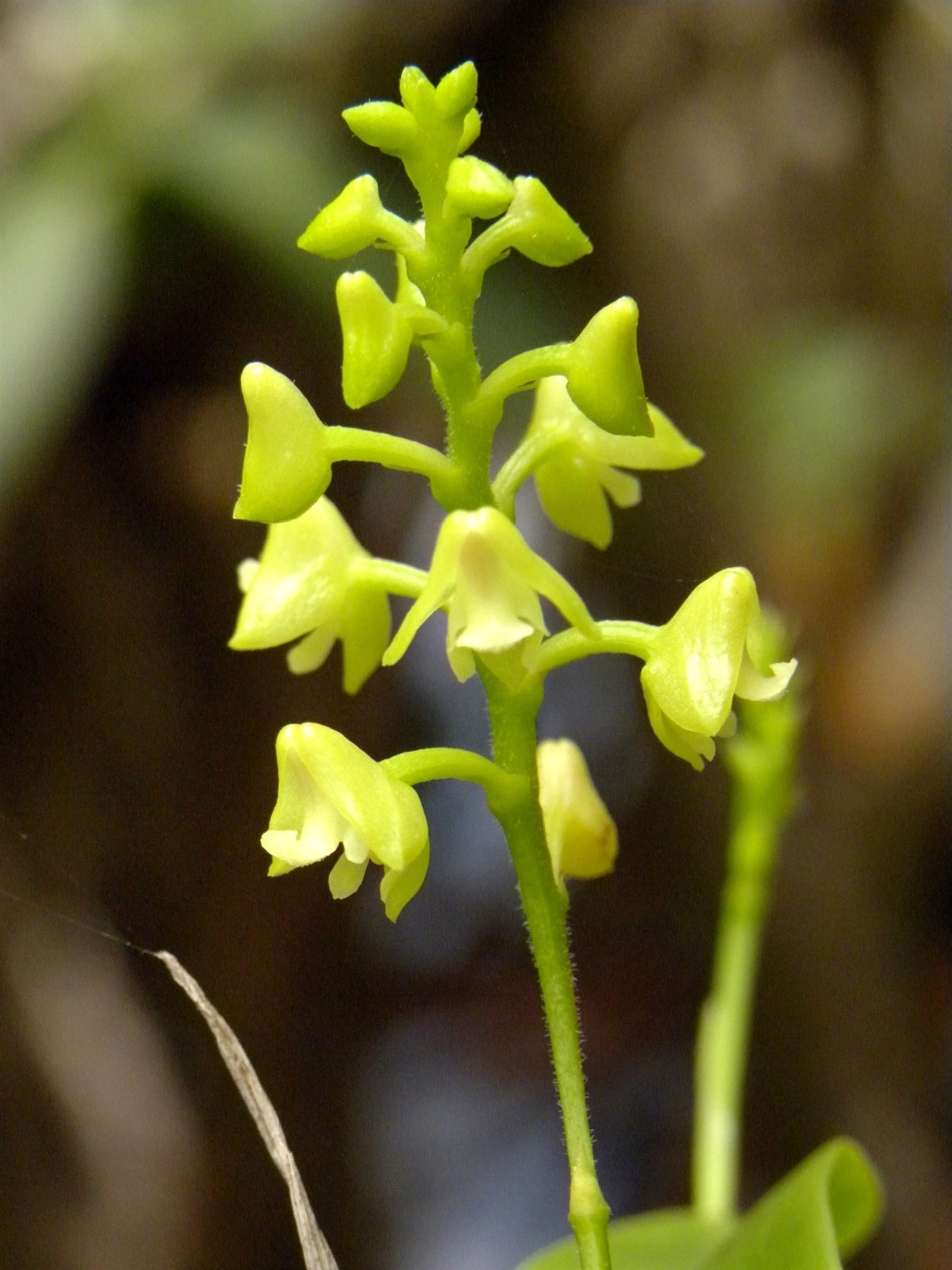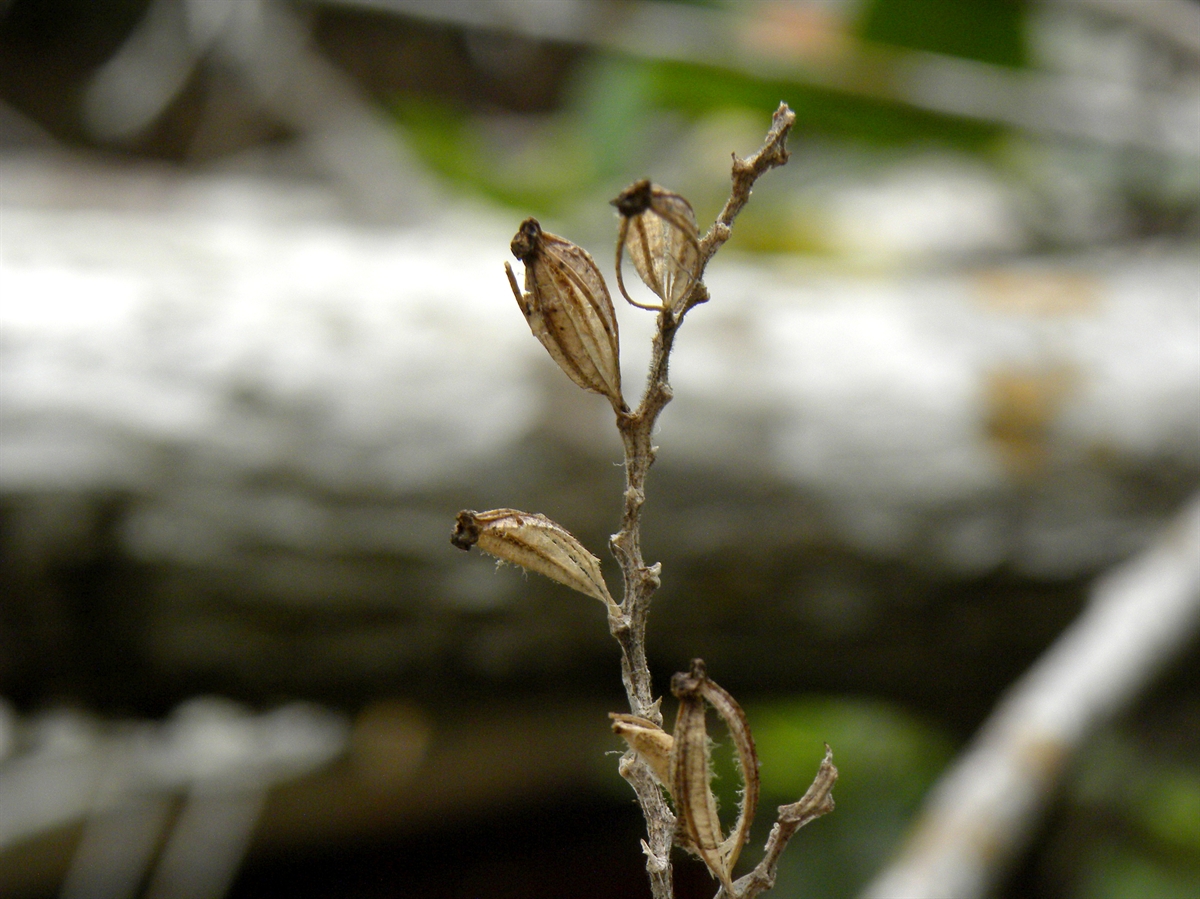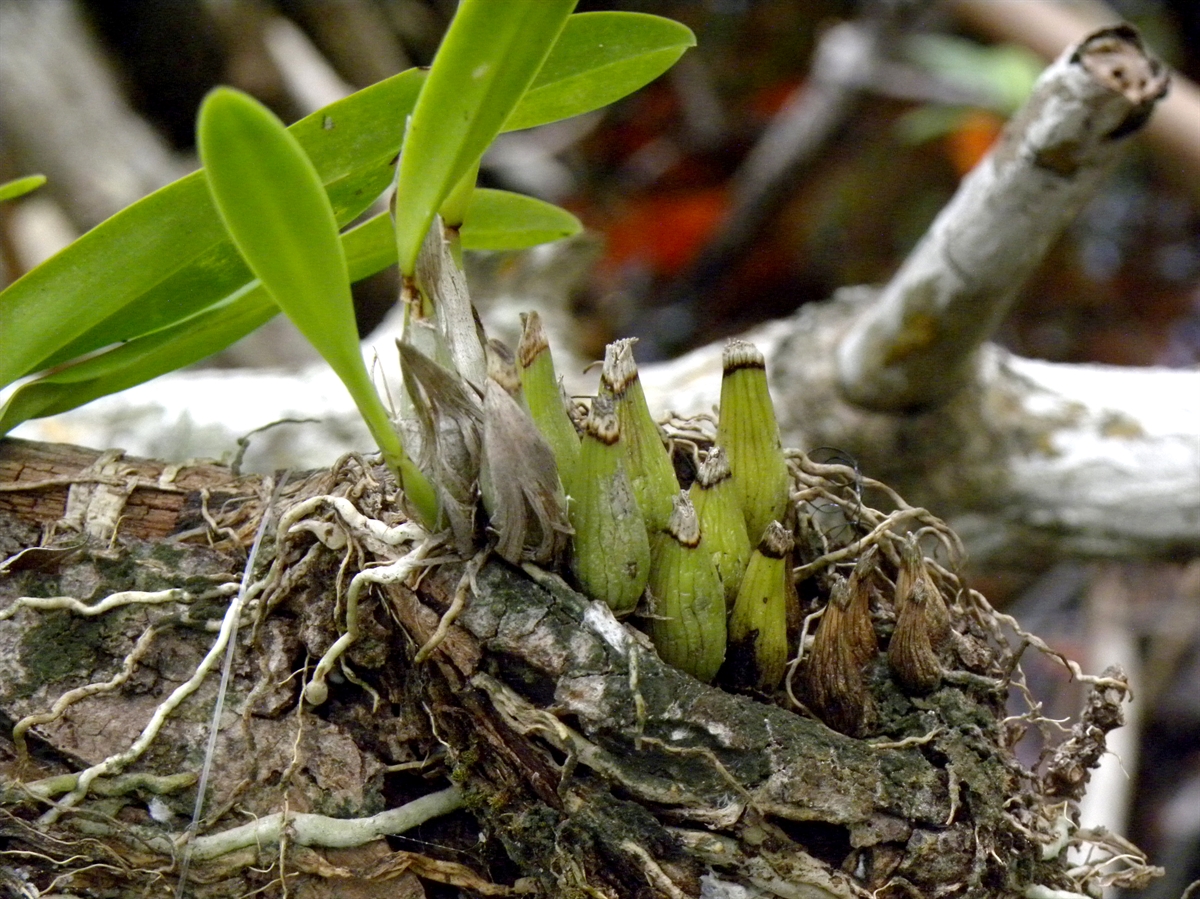Habit: Polystachya foliosa grows as an epiphyte on tree branches. It produces a very short rhizomatous stem that is covered with secondary stems that expand to form pseudobulbs to 2 cm in length. The pseudobulbs that are enclosed by membranous sheathes that decay as the pseudobulb enlarges with age. From the top of the pseudobulb 1-3 bright green flattened linear leaves emerge that are up to 15 cm in length. The pseudobulb is a bright green color.
The complete, perfect, zygomorphic flowers are arranged in racemes (rarely panicles). Flowers are produced in summer months. The calyx has 3 partially fused, yellowish-white sepals; 2 lateral and 1 below. There are 3 partially fused yellowish-white petals. The labellum is unfused, 3 lobed, and attached to a very short column foot. The mid lobe is curved inward and central ridge with glandular hairs. The column has 3 anthers; 1 central with 2 pollinia and 2 lateral anthers each with 1-2 pollinia, but no prominent foot. The ovary is inferior and the fruit is a capsule at maturity up to 1 cm in length.
Habitat: Polystachya foliosa grows on branches as an epiphyte in Mangroves and extremely wet Dry Broadleaf Evergreen Formation – Forests (coppice) areas over sinkholes.
Distribution: Polystachya foliosa occurs in the Lucayan Archipelago on Andros, Grand Bahama and Abaco as well as in Cuba.
Medicinal/Cultural/Economic usage: While there are no medicinal uses of Polystachya foliosa like all orchids they are prized for their beautiful flowers. ALL orchids are protected internationally by the Convention on the International Trade of Endangered Species (CITES) and should not be collected from the wild.



